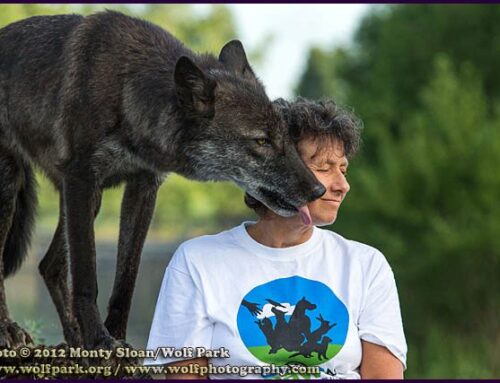
The seminar was held at the Monadnock Humane Society in Keene NH. It’s a pleasant facility with lots of outdoor space for dogs and an open, cheery entry way, which happened to also be full of cages of cats. Even for a ‘dog person’ it’s hard to see so many beautiful animals, some struggling to engage with visitors, stretching their paws out of cages, mewling and making what felt like pleading eye contact, others seemingly resigned to their lives in captivity. There were play rooms full of cats as well. Too many cats and kittens. I was told that many would be adopted but others might live there for years. But this is also not what I was planning to write about either.
Outside of the dog kennels were containers of treats (good treats in some cases, not just dry biscuits) and on the containers were the instructions- PLEASE FEED ME TREATS EVEN IF I AM BARKING. Huh? Feed them treats even if they’re barking? Won’t that just reinforce the barking behavior? I mean that’s the way it works right? Dogs repeat behaviors they get rewarded for, so giving them treats even if they’re barking means everyone who approached the cage would be teaching the dog to bark, right? Wrong!
What the good folks at the shelter understand is that dogs in shelters, and other stressful situations, are most likely behaving out of anxiety and stress. Some may be concerned about people approaching. The treats are not being used to address the behavior the dogs are displaying but rather the emotions the dogs are experiencing. Feeling a bit nervous about people? What better way for a dog to feel less concerned about people than to pair their approach with something the dog enjoys. Wanting out in a bad way and feeling frustrated and trapped? A treat may not be the perfect solution but it sure beats nothing. Some of the dogs were obviously fearful of having people approach their cages, but none so much that they couldn’t gobble up treats tossed to them. Many then sat and looked expectantly for more.
One of the big challenges fearful dogs face is their handler’s inability or unwillingness to acknowledge that every behavior has an emotion attached to it. We are always addressing the emotion when we handle or train dogs. Sometimes we use their enjoyment and excitement for a reward to get them to perform behaviors, withholding rewards until we get or improve behavior. Sometimes we see that the behavior is driven by fear and use rewards to change how the dog feels realizing that when the fear subsides the behavior attached to it is going to change as well. And importantly, for the handling and training of any dog, understanding we are also causing emotional responses to certain behaviors. How we behave with dogs, whether we shout, yank, hit, ignore, shock, praise or reward, affects how they feel about particular behaviors, not to mention how they feel about us.





